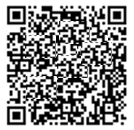[1] 中华医学会呼吸病学分会. 中国成人社区获得性肺炎诊断和治疗指南(2016年版)[J]. 中华结核和呼吸杂志, 2016, 39(4):253-278.
[2] 中国老年医学学会呼吸病学分会. 老年肺炎临床诊断与治疗专家共识(2024年版)[J]. 中华结核和呼吸杂志, 2025, 48(1):18-34.
[3] CILLONIZ C, TORRES A, NIEDERMAN MS. Management of pneumonia in critically ill patients[J]. BMJ, 2021,6:375:e065871.
[4] 邹晓辉, 曹彬. 呼吸道感染病原学诊断年度进展2021[J]. 中华结核和呼吸杂志, 2022, 45(1): 78-82.
[5] 金琴, 朱志红, 宋美红, 等. 创新安全型痰液采样器的临床应用分析[J]. 中华临床感染病杂志, 2021,14(5):377-381.
[6] 周向东, 李升锦, 杜先智. 呼吸道组织振荡技术对气道滞留物清除的影响[J]. 中华物理医学与康复杂志, 2002,24(7):396-398.
[7] AHN JH.An update on the role of bronchoscopy in the diagnosis of pulmonary disease[J]. Yeungnam Univ J Med, 2020, 37(4): 253-261.
[8] 白冲. 2021年支气管镜介入诊断的技术更新和领域拓展[J]. 中华医学杂志, 2022, 102(24):1782-1785.
[9] PRADO RMG, CICENIA J, ALMEIDA FA.Robotic-assisted bronchoscopy: A comprehensive review of system functions and analysis of outcome data[J]. Diagnostics (Basel), 2024,14(4):399-401.
[10] ZÖLLNER F. Gustav Killian. Father of bronchoscopy[J]. Arch Otolaryngol, 1965, 82(6): 656-659.
[11] 王洪武,李冬妹. 中国支气管镜介入治疗现状及进展[J]. 中国研究型医院, 2020,7(8):1-10.
[12] 白冲, 李强. 经支气管镜腔内超声应用进展[J]. 中国呼吸与危重监护杂志, 2009,8(1):85-88
[13] 陈愉,李时悦,陈汉章,等. 电磁导航支气管镜实时引导肺活检对肺外周微小病变的诊断价值[J] . 中华结核和呼吸杂志, 2014, 37(8):579-582.
[14] 张武胜, 黄海东, 白冲. 机器人辅助支气管镜应用进展[J]. 中华结核和呼吸杂志, 2024,47(8):776-780.
[15] 中华医学会呼吸病学分会介入呼吸病学学组. 成人诊断性可弯曲支气管镜检查术应用指南(2019年版)[J]. 中华结核和呼吸杂志, 2019, 42(8):573-590.
[16] 彭爱梅, 李明, 张国良, 等. 荧光支气管镜评估中央型肺癌浸润范围及指导治疗的价值[J]. 中华内科杂志, 2015, 54(1):40-43.
[17] 陈众博, 虞亦鸣, 孙士芳, 等. 窄带成像联合自荧光支气管镜对中央型肺癌的诊断价值[J]. 中华结核和呼吸杂志,2014,37(3):184-187.
[18] SU ZQ, GUAN WJ, LI SY, et al.Evaluation of the normal air way morphology using optical coherence tomography[J]. Chest, 2019, 156(5):915-925.
[19] 罗为展, 钟长镐, 陈愉, 等. 肺癌体内共聚焦激光显微内镜成像的初步观察[J]. 中华结核和呼吸杂志, 2015, 38(10):792-793.
[20] 杨泽梁, 郑晓玲. 细胞内镜在上消化道疾病的应用研究进展[J]. 中华消化杂志, 2022, 42(7):494-497.
[21] ALIOHANEY AA.Real time endobronchial ultrasound transbronchial needle aspiration for the diagnosis of tuberculous intrathoracic lymphadenopathy: Saudi Arabian Western region experience[J]. Saudi Med J, 2023, 44(2):178-186.
[22] 田森, 王新宇, 黄海东, 等. 支气管镜技术在肺外周病变诊断中的研究进展[J]. 中华内科杂志, 2023, 62(11):1346-1352.
[23] ALI MS, GHORI UK, WAYNE MT, et al.Diagnostic performance and safety profile of robotic-assisted bronchoscopy: A systematic review and aeta-analysis[J]. Ann Am Thorac Soc, 2023, 20(12):1801-1812.
[24] SAGHAIE T, WILLIAMSON JP, PHILLIPS M, et al.First-in-human use of a new robotic electromagnetic navigation bronchoscopic platform with integrated Tool-in-Lesion Tomosynthesis (TiLT) technology for peripheral pulmonary lesions: The FRONTIER study[J]. Respirology, 2024, 29(11):969-975.
[25] LU YC, WANG LX, DUANMU HJ, et al.Handbook of global tuberculosis control[M]. New York:Springer, 2017, 235-253.
[26] 丁卫民, 陈效友. 结核病支气管镜介入诊断结核病诊断新进展[M]. 第一版. 北京:北京科学技术出版社, 2017, 143-168.
[27] 杨松, 郭建琼, 李同心, 等. 结核病介入诊断与治疗年度进展(2023)[J]. 中华结核和呼吸杂志,2024, 47(4): 363-370.
[28] 谷海瀛. 形态学检查方法的标准化及其在细菌鉴定中的作用[J]. 中华检验医学杂志, 2006, 29(10):951-953.
[29] 逄宇, 王玉峰, 高兴辉, 等. 结核分枝杆菌实验室检测产品和技术应用进展[J]. 中国临床新医学, 2021, 14(1): 23-34.
[30] LIU CF, SONG YM, HE P, et al.Evaluation of multidrug resistant loop-mediated isothermal amplification assay for detecting the drug resistance of mycobacterium tuberculosis[J]. Biomed Environ Sci, 2021,34(8):616-622.
[31] 宋国威, 潘婧, 梁芸, 等. 呼吸道病原体多重核酸扩增在老年患者呼吸系统感染检测中的应用[J]. 中华实验和临床病毒学杂志, 2020, 34(3):299-304.
[32] HERNANDEZ AV, DE LAURENTIS L, SOUZA I, et al.Diagnostic accuracy of Xpert MTB/RIF for tuberculous meningitis: systematic review and meta-analysis[J]. Trop Med Int Health, 2021, 26(2): 122-132.
[33] 中华医学会结核病学分会临床检验专业委员会. 结核病病原学分子诊断专家共识[J].中华结核和呼吸杂志, 2018, 41(9): 688-695.
[34] 中华医学会检验医学分会临床微生物学组, 中华医学会微生物学与免疫学分会临床微生物学组, 中国医疗保健国际交流促进会临床微生物与感染分会. 宏基因组高通量测序技术应用于感染性疾病病原检测中国专家共识[J]. 中华检验医学杂志, 2021, 44(2): 107-120.
[35] 丁彦青,王慧君,申洪, 等. 严重急性呼吸综合征病原体检测及临床病理学观察[J]. 中华病理学杂志, 2003, 32(3):195-200.
[36] 王翠萍, 邵汇琳, 王澎, 等. 组织病理学诊断的肺真菌病187例菌种分布的回顾性分析[J]. 中华结核和呼吸杂志, 2021, 44(1): 28-31.
[37] 张立群, 马伟路, 笪冀平. 结核病小鼠病理学与TH1/TH2细胞动力学及iNOS表达关系的研究[J]. 中华微生物学和免疫学杂志, 2001, 21(2):166-170.
[38] 《临床分子病理实验二代基因测序检测专家共识》编写组. 临床分子病理实验室二代基因测序检测专家共识[J]. 中华病理学杂志, 2017, 46(3):145-148.
[39] 穆晶, 刘子臣,张晨,等. 非结核分枝杆菌肺病的病理学特征及分子病理在其诊断中的价值[J] 中华病理学杂志, 2020, 49(6):562-567.
[40] ZAIDI A, KAUR H, GUPTA P, et al.Role of bronchoalveolar lavage in diagnosing pulmonary infections and malignancies: Experience from a tertiary care center[J]. Diagn Cytopathol, 2020, 48(12):1290-1299.
[41] 杨晓瑞, 玄鹏, 李金沛, 等. 改良式胸外按压预防支气管结核患者无痛支气管镜诊疗期间低氧血症的研究[J/CD].新发传染病电子杂志, 2023, 8(4):41-44.
[42] 刘志学. 内镜介入在呼吸疾病诊疗领域应用前景无限-访首都医科大学附属北京胸科医院内镜诊疗中心主任丁卫民教授[J]. 中国医药导报, 2019, 16(12): 1-3. |



